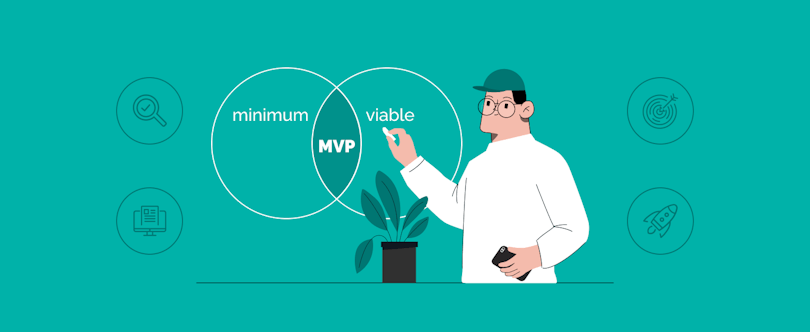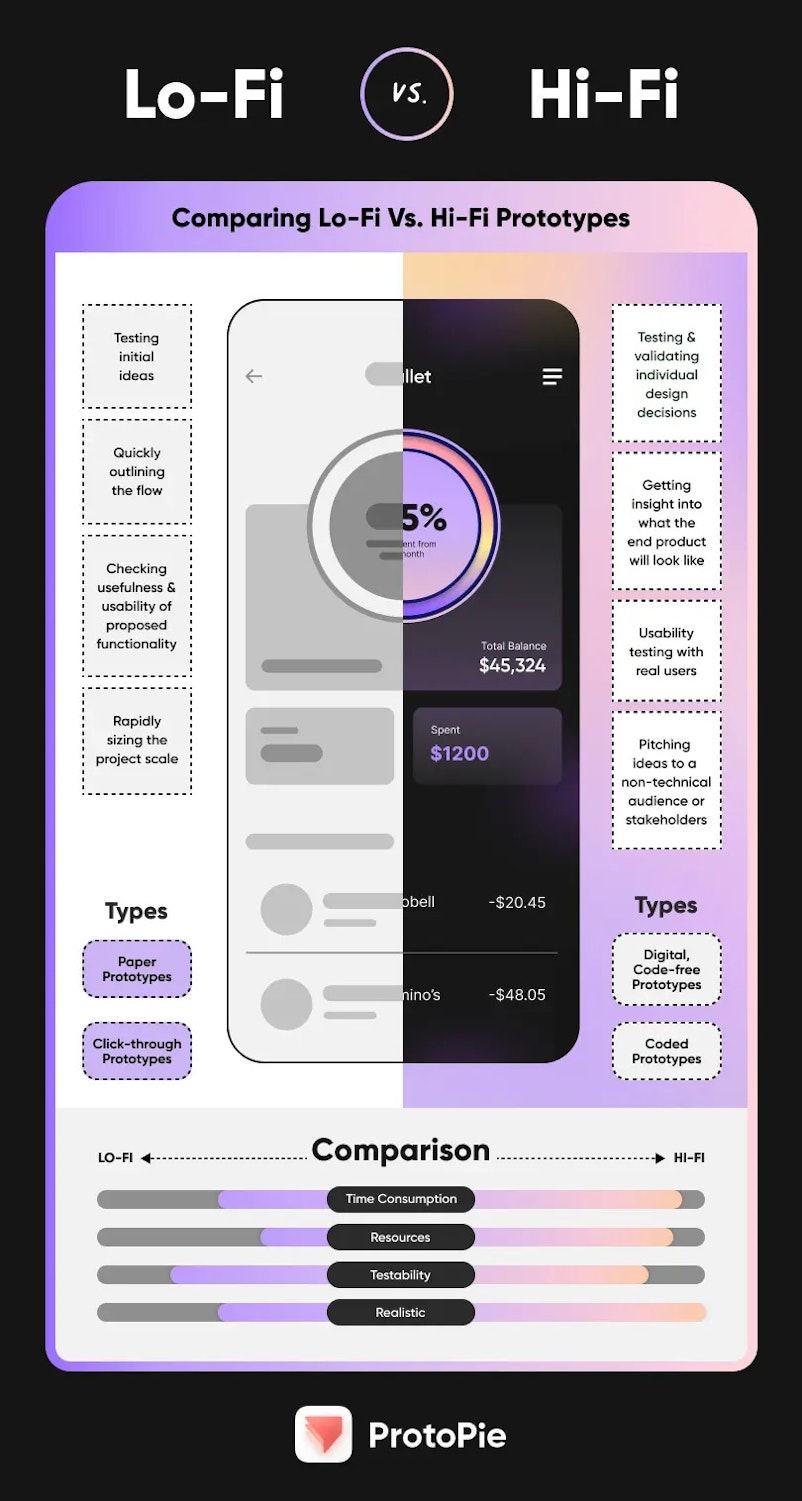In the fast-paced world of startups, it's crucial to bring your product to market quickly and efficiently. This is where the concept of a Minimum Viable Product (MVP) comes into play. An MVP is a version of your product that has just enough features to satisfy early customers and provide valuable feedback for future development.
By focusing on the core functionality and gathering insights from real users, startups can reduce development costs, validate their ideas, and gain a competitive edge in the market.
In this article, we'll dive into the importance of building an MVP, build MVP, explore the key objectives of an MVP, and provide a step-by-step guide on how to create a successful MVP that sets your startup up for long-term success. So, buckle up and get ready to learn how to launch your product with confidence!

Defining the Core Problem and Target Audience
Identifying the Problem
At the heart of every successful product lies a core problem that needs solving. This problem often stems from a gap in the market, a frustrating experience, or an unmet need.
For instance, imagine a busy professional struggling to maintain a healthy work-life balance. Your product could address this by offering time management tools or wellness resources that fit seamlessly into their hectic schedule. By pinpointing this specific pain point, you can create a solution that resonates deeply with potential users.
Understanding Your Target Audience
Once the problem is defined, the next step is to understand who your target audience is. This involves diving into demographics such as age, gender, income level, and location, but it goes beyond numbers. It’s about grasping their needs, preferences, and behaviors.
For example, a millennial might prioritize sustainability and convenience, while a baby boomer might value reliability and ease of use. Conducting surveys, interviews, or market research can provide valuable insights.
By truly understanding your audience, you can tailor your messaging and product features to meet their expectations, ensuring a stronger connection and higher engagement.
Defining Your Value Proposition
Articulating the Problem and Solution
A compelling value proposition begins with a clear articulation of the problem your product solves. For example, consider a busy parent who struggles to find nutritious meals that their kids will actually eat. Your product could be a meal kit service designed specifically for families, offering easy-to-follow recipes and kid-approved ingredients.
By addressing this common challenge, you not only highlight the problem but also showcase the value your solution brings: convenience, health, and family bonding over meals.
Differentiating Your Product
To stand out in a crowded market, it’s crucial to identify what makes your product unique. What features or benefits set you apart from the competition?
Perhaps your meal kit service uses locally sourced ingredients, supports sustainable farming, or includes interactive cooking videos to engage children. These unique aspects not only enhance the user experience but also create a strong emotional connection with your audience.
By emphasizing these differentiators in your messaging, you can effectively communicate why your solution is the best choice for potential customers, making them more likely to choose your product over others.
Identifying Key Features
Prioritizing Features
When developing a product, it’s essential to focus on key features that directly address the core problem you've identified. Start by listing potential features and then prioritize them based on their impact and feasibility.
For instance, if your meal kit service aims to simplify family dinners, essential features might include easy-to-follow recipes, customizable ingredient options, and a user-friendly app for ordering. By honing in on these must-have features, you ensure that your product effectively meets the needs of your target audience while avoiding unnecessary complexity.
Roadmap
Once you’ve prioritized your features, it’s time to create a roadmap for development. This plan should outline clear milestones and deadlines for your Minimum Viable Product (MVP).
For example, you might set a timeline to finalize your recipe database in the first month, develop the app interface in the next two months, and conduct user testing by the fourth month. Breaking down the development process into manageable steps not only keeps your team focused but also allows for iterative improvements based on user feedback.
A well-structured roadmap ensures that you stay on track, ultimately leading to a successful product launch that truly resonates with your audience.
Designing and Prototyping
Designing Mockups
Transforming your product ideas into a tangible reality begins with designing mockups. These wireframes or mockups serve as a blueprint for the user interface, allowing you to visualize how the product will look and function.
For your meal kit service, you might start by sketching out the app's home screen, showcasing featured recipes and a simple ordering process. As you refine your designs, consider incorporating user feedback and industry best practices to ensure an intuitive and visually appealing interface.
Remember, your mockups should not only be aesthetically pleasing but also guide users seamlessly through the product experience.
Building a Prototype

With your mockups in hand, it's time to bring your product to life by building a prototype. This basic functional model allows you to test the design and functionality of your meal kit service before investing in full-scale development.
You might create a clickable prototype that simulates the ordering process or a paper prototype that users can physically interact with. Conducting user testing with your prototype provides valuable insights into areas that need improvement, such as confusing navigation or missing features.
Iterating on your prototype based on user feedback ensures that your final product is polished, user-friendly, and ready to delight your audience.
Developing the MVP
Choosing Tools
As you embark on building your meal kit service, selecting the right development tools is crucial for rapid and efficient progress. Choose frameworks and MVP tech stacks that align with your team's expertise and the project's requirements.
For example, you might opt for a mobile app development platform that simplifies the creation of your iOS and Android apps, allowing you to reach a wider audience. By leveraging the power of these tools, you can streamline the development process, focusing on bringing your product to life without getting bogged down by technical complexities.
Core Functionality
When developing your Minimum Viable Product (MVP), it's essential to stay laser-focused on the core functionality that addresses your target audience's needs. Using agile development practices, break down the essential features into manageable tasks and work iteratively to bring them to life.
For your meal kit service, this might involve building the recipe database, creating the ordering system, and integrating payment processing. By prioritizing these core elements, you ensure that your MVP delivers value to users while leaving room for future enhancements based on feedback.
Launching and Gathering Feedback
Releasing to Early Adopters
The moment you've been waiting for has arrived: it's time to launch your meal kit service MVP! However, instead of opening the floodgates to the general public, start by releasing your product to a select group of early adopters. These users, often tech-savvy and open to trying new things, can provide valuable insights and help refine your offering before a wider launch. Offer incentives or exclusive access to encourage participation and foster a sense of community around your brand.
Feedback Collecting
As your early adopters engage with your meal kit service, it's crucial to gather their feedback. Utilize surveys, user testing tools, and direct communication channels to understand their experiences, pain points, and suggestions for improvement. This feedback will be instrumental in shaping the future development of your product.
For example, if users consistently report difficulties with the recipe search function, prioritize enhancing that feature in your next development sprint. By actively listening to your audience and incorporating their input, you demonstrate a commitment to delivering a product that truly meets their needs.
Iterating
Evaluating Feedback
Once your MVP is in the hands of early adopters, the next step is to dive into their feedback. This involves sifting through comments, surveys, and usage data to identify both strengths and areas for improvement. Look for patterns in user experiences—what features do they love, and where do they struggle?
This analysis will provide a clear picture of how your product is performing and highlight opportunities for enhancement.
Refining the Product
With insights in hand, it’s time to refine your MVP. Make adjustments based on user feedback to enhance usability and functionality. For example, if users find the recipe search cumbersome, consider simplifying the interface or adding filters. Iterating on your product not only improves user satisfaction but also strengthens your offering for future growth.
Measuring Success
Defining KPIs
To gauge the success of your MVP, establish key performance indicators (KPIs) that align with your business goals. These could include metrics like user engagement, retention rates, and customer satisfaction scores. By defining clear KPIs, you create a framework for assessing how well your product meets user needs.
Analyzing Results
Once your MVP is launched and data begins rolling in, take the time to analyze the results. Review the KPIs to validate your initial assumptions and understand user behavior. This data-driven approach will guide your next steps, helping you make informed decisions about future development and feature enhancements.
Preparing for Scaling
Refining the Product
As you prepare for scaling, focus on making final refinements to your product based on user feedback and performance data. Ensure that your MVP is robust, user-friendly, and ready to handle increased demand. This may involve optimizing your technology stack or enhancing customer support systems.
Planning for Growth
Develop strategies for expanding your product’s reach. Consider how you can enhance your marketing efforts, explore new distribution channels, or tap into partnerships that align with your brand. A well-thought-out growth plan will position your product for success in a competitive market.
Planning for Funding
Prepare a Pitch
With your MVP success story in hand, it’s time to create a compelling pitch for potential investors. Highlight key achievements, user feedback, and growth potential. A strong narrative about your product’s impact and market opportunity will capture investor interest.
Seeking Additional Funding
To support further development, explore various strategies for securing investment. This may include reaching out to angel investors, venture capitalists, or crowdfunding platforms. Tailor your approach based on the interests of your target investors, showcasing how their support will help scale your product.
Marketing Your Product
Marketing Strategies
Investing in marketing is crucial to reaching a broader audience. Develop a comprehensive marketing strategy that includes social media campaigns, influencer partnerships, and email marketing. By effectively promoting your product, you can attract new users and build brand awareness.
Online Advertising and Content Marketing
Utilize various marketing channels to promote your meal kit service. Online advertising, such as pay-per-click campaigns, can drive targeted traffic to your site, while content marketing—like blogs and recipes—can engage users and establish your brand as an authority in the space. A multi-channel approach will maximize your reach and impact.
Monitoring, Supporting, and Updating
Continuous Monitoring
Once your product is live, continuous monitoring is key to ensuring its success. Track performance metrics, user satisfaction, and feedback to stay informed about how your product is performing in real time. This proactive approach allows you to address issues before they escalate.
Support
Offering ongoing support is essential for user retention. Make sure your customers have access to help when they need it, whether through FAQs, chatbots, or customer service representatives. Additionally, commit to regular updates that enhance the product and keep users engaged. This dedication to support and improvement will foster loyalty and encourage long-term success.
Conclusion
In summary, developing a Minimum Viable Product (MVP) involves clearly defining the core problem, identifying key features, and iterating based on user feedback.
Startups should prioritize agile development practices, establish meaningful KPIs, and create a solid marketing strategy to ensure their product resonates with the target audience. By embracing these practices, startups can navigate the challenges of product development more effectively.
As you move forward, focus on refining your offering, gathering insights, and preparing for growth. Remember, the journey is just beginning—stay adaptable, listen to your users, and keep innovating for success!





